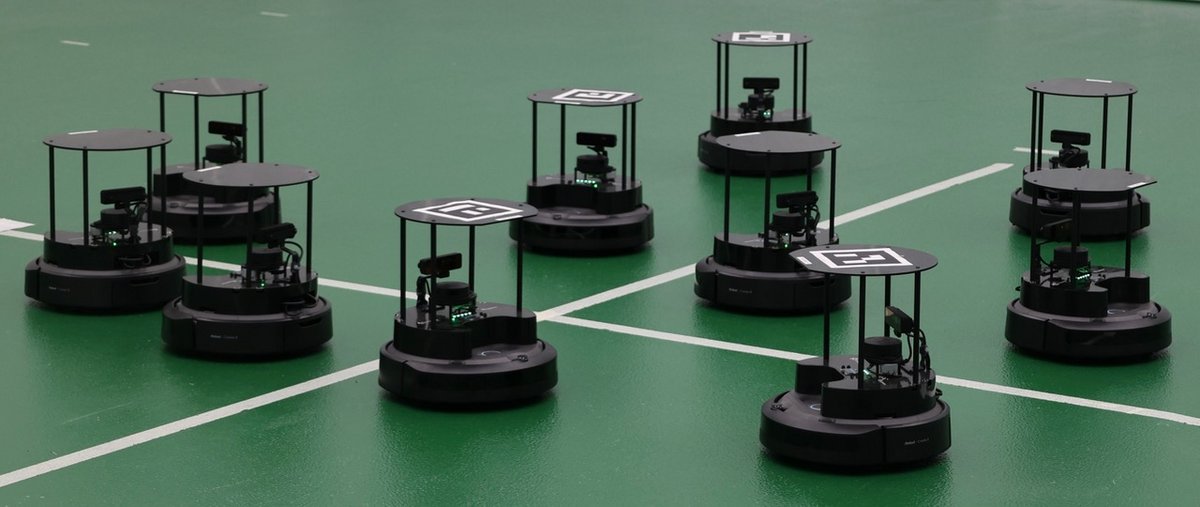
Division of labour in robot swarms with minimize surprise
Social animals show complex forms of division of labour and task allocation. This natural division of labour often relies on morphological or genetic specialization and communication (e.g., recruitment signals). Similarly, decentralized mobile multi-robot systems need to coordinate and collaborate to solve complex tasks using collective behaviours.
External Page
To view this content (source: www.xyz.de ), please click on Accept. We would like to point out that by accepting this iframe, data could be transmitted to third parties or cookies may be stored.
You can find more information on our privacy policy .
In this project, we will use methods of evolutionary computation and our minimize surprise approach to provoke division of labour and task allocation in robot swarms. Instead of aiming for a specific task, our minimize surprise method lets robots choose actions that make their world predictable. In this way, it can serve as an intrinsic motivation for a variety of collective behaviours. We will also study the influence of further factors on the emergence of task allocation in our robot swarms, such as hardware and software heterogeneity and distribution of resources. For this purpose, we will collaborate with biologists studying division of labour in lions and ants. We plan to test our developed system in simulations and real robot experiments using different swarm sizes, ranging from 5 to 15 robots on small and large areas. These simulations and real-world experiments can also serve as a testbed for biological hypotheses. We hope our project will contribute both to developing new technologies and understanding our natural world better.

